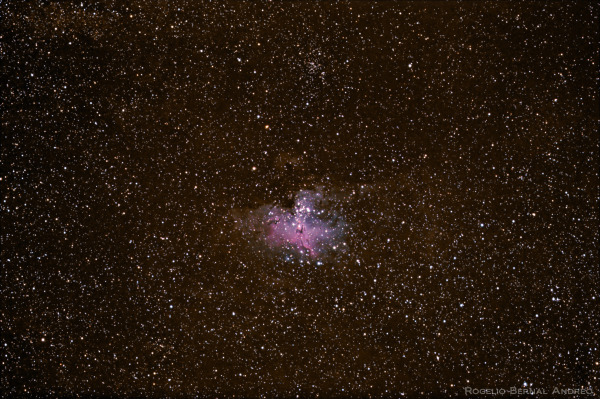“The most amazing lesson in aerodynamics I ever had was the day I climbed a thermal in a glider at the same time as an eagle. I witnessed, close up, effortlessness and lightness combined with strength, precision and determination.” -Norman Foster
It's called the "Eagle Nebula" because the shape of the nebula itself faintly resembles the silhouette of that hyper-intelligent and skilled bird-of-prey, but what lies inside is far more spectacular than any early skywatcher imagined.
 Image credit: Rogelio Bernal Andreo, via http://www.deepskycolors.com/archivo/2008/06/07/messier-16-The-Eagle-Ne….
Image credit: Rogelio Bernal Andreo, via http://www.deepskycolors.com/archivo/2008/06/07/messier-16-The-Eagle-Ne….
An in-depth look reveals that all the stages of new star formation are present, from dust still collapsing under its own gravity, to pillars forming new proto-stars while simultaneously evaporating, to young fully-formed stars ionizing and working to dissociate the remaining nebular regions.
 Image credit: T.A.Rector (NRAO/AUI/NSF and NOAO/AURA/NSF) and B.A.Wolpa (NOAO/AURA/NSF), via http://www.noao.edu/image_gallery/html/im0725.html.
Image credit: T.A.Rector (NRAO/AUI/NSF and NOAO/AURA/NSF) and B.A.Wolpa (NOAO/AURA/NSF), via http://www.noao.edu/image_gallery/html/im0725.html.
It's the Eagle Nebula, home to some of the most spectacular sights our Universe has to offer, for this marvelous Messier Monday!
